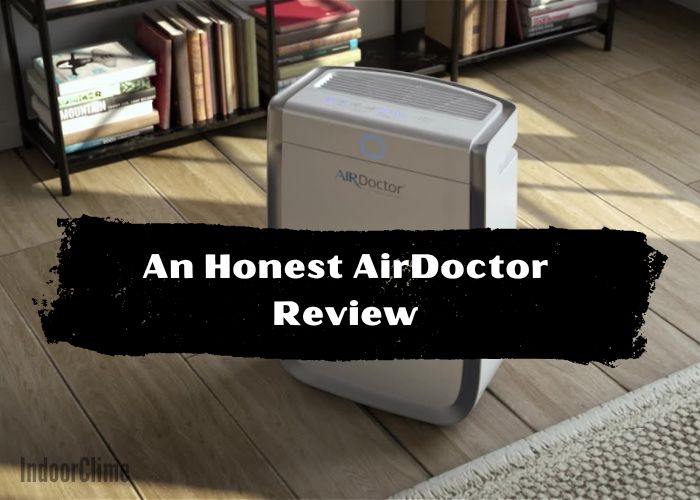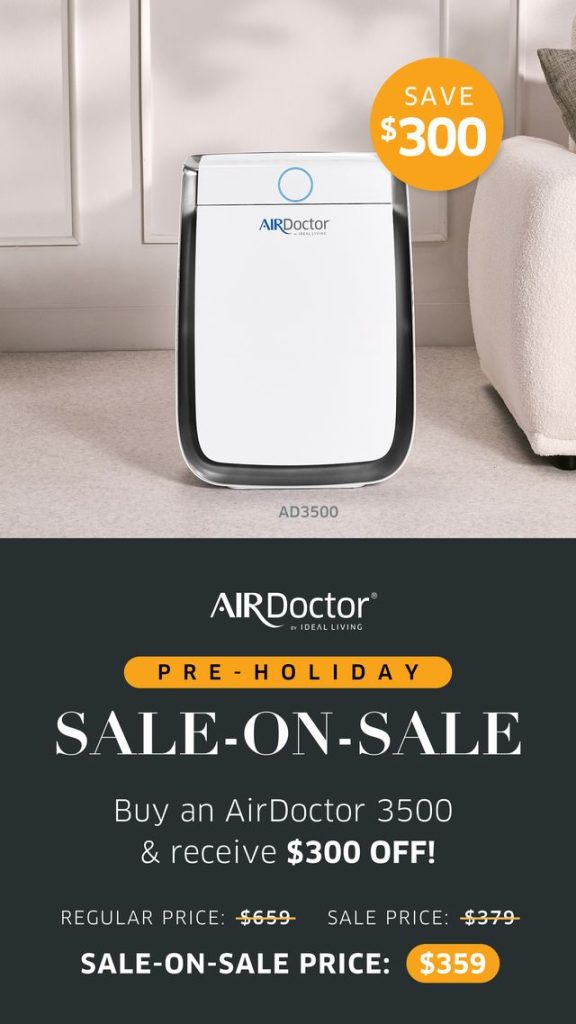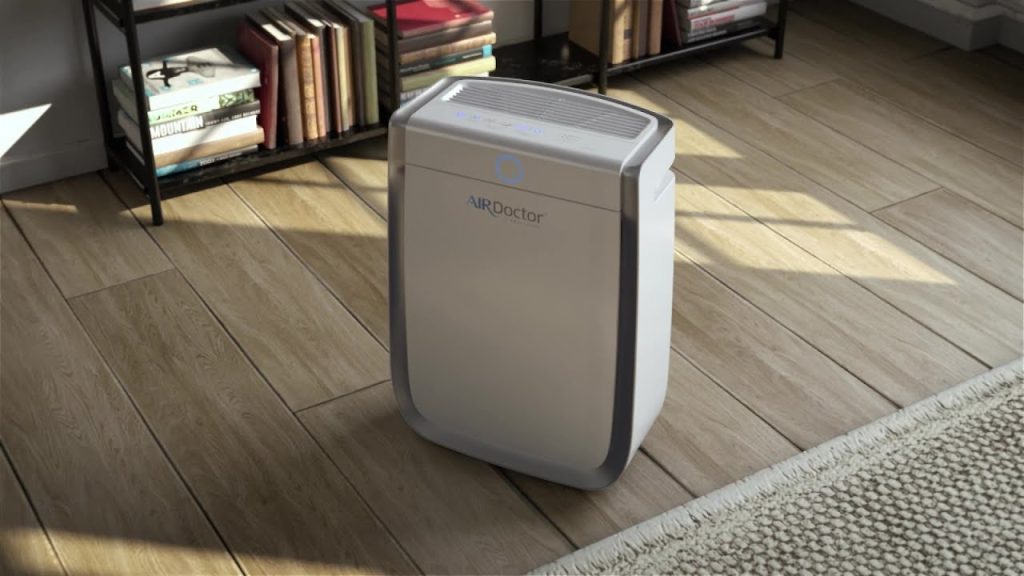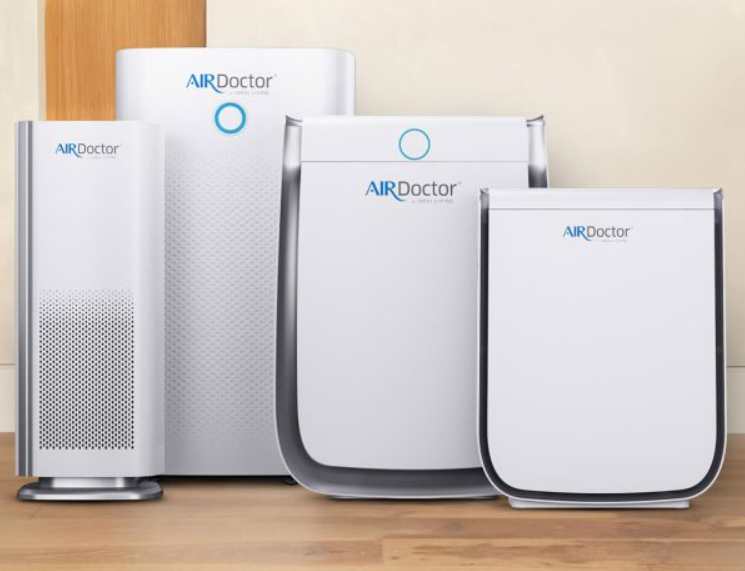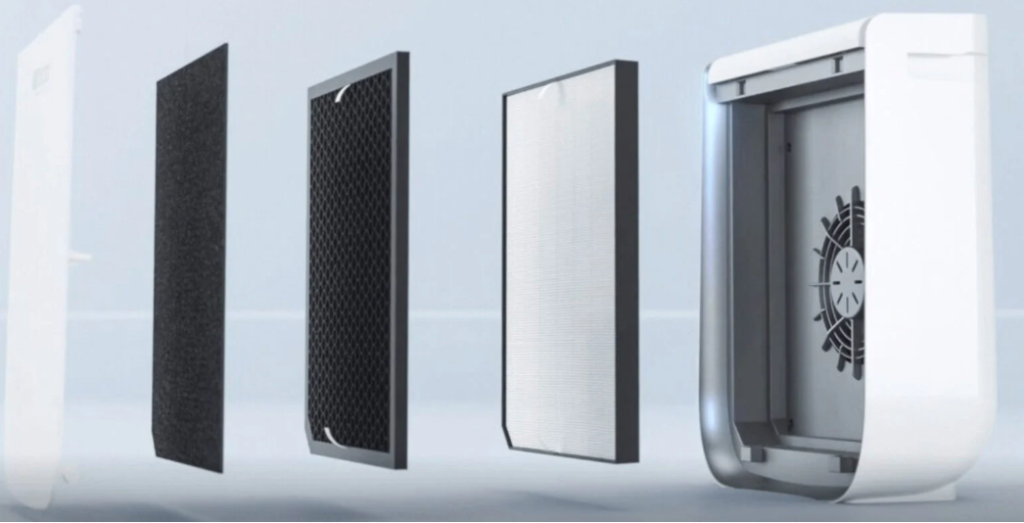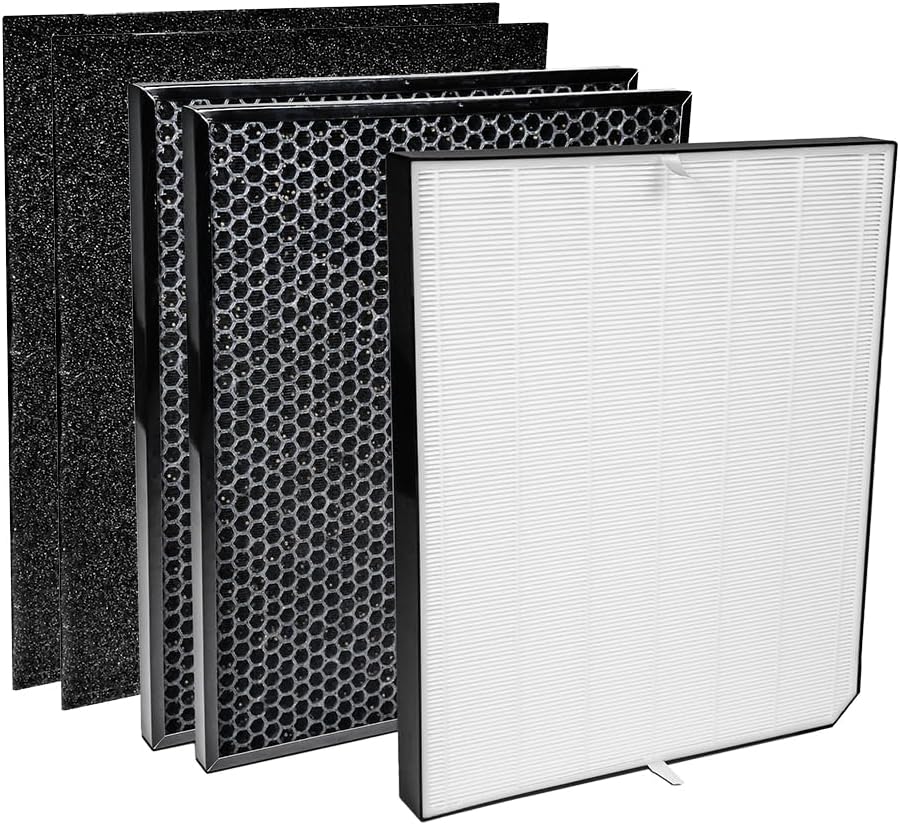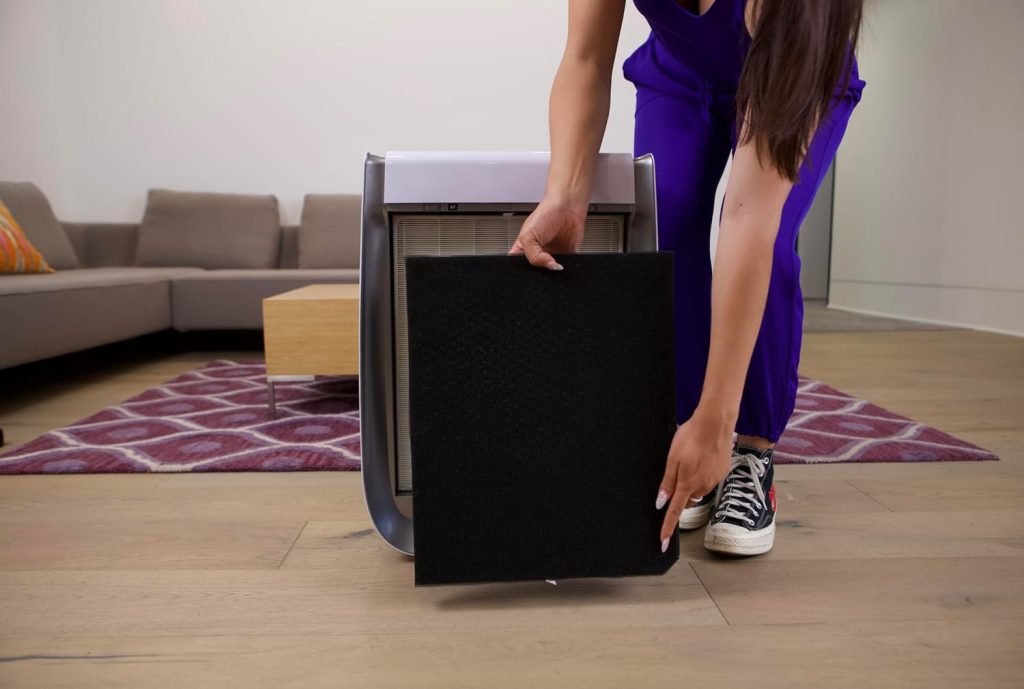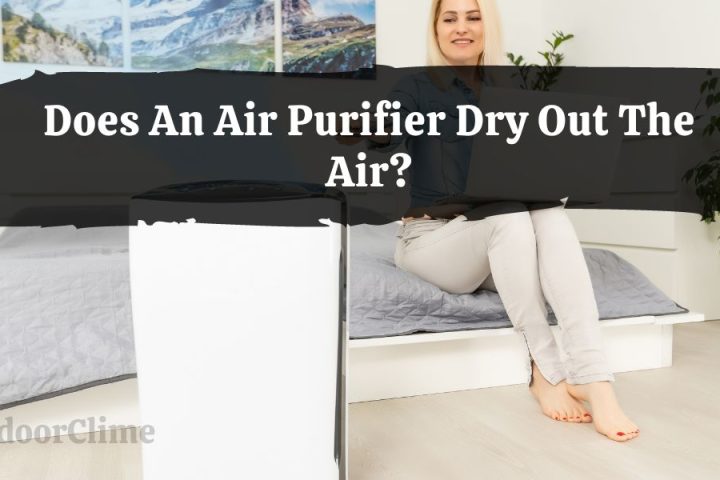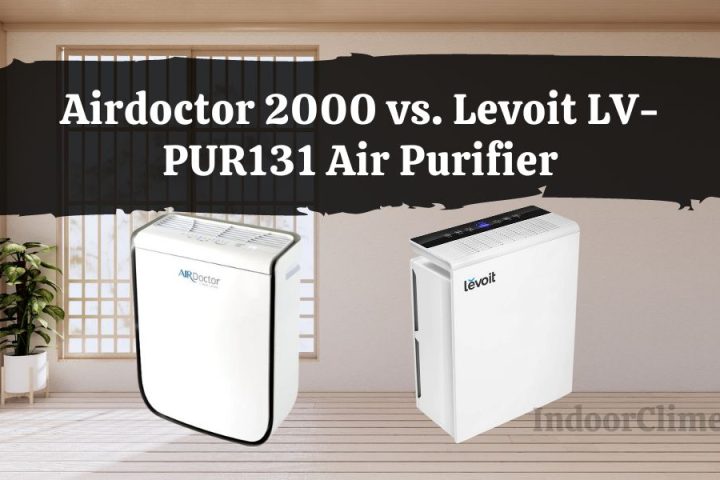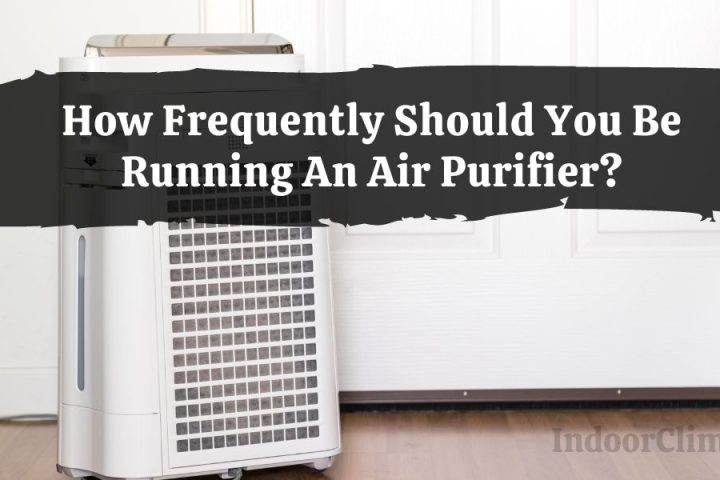Let’s be real—most of us don’t think about the air inside our homes until something feels… off. A lingering smell. A stuffy nose every morning.
Or in my case, seasonal allergies that came out of nowhere after never having them before.
That’s when I started researching air purifiers—and after way too many tabs and comparison charts, I bought the AirDoctor 3500 (formerly the 3000).
No sponsorships, no freebies—just my own money and a lot of curiosity.
Fast forward a few years, and I can honestly say: this thing hasn’t just impressed me—it’s become a daily essential.
If you’re wondering what makes the AirDoctor different, whether it’s really worth the cost, and what to expect once it’s in your home, this review will walk you through everything I’ve learned from real-life, long-term use.
Pros
Cons
What Is the AirDoctor?
The AirDoctor is a high-performance air purifier designed to remove a wide range of airborne contaminants including dust, mold spores, pet dander, pollen, VOCs, smoke, and even bacteria and viruses.
What sets it apart from standard purifiers is its UltraHEPA filter, which captures particles as small as 0.003 microns in size – 100 times smaller than a standard HEPA filter can.
Every AirDoctor model uses a 3-stage filtration system for powerful air purification:
-
Pre-filter – Traps larger particles like dust, lint, and pet hair to protect the other filters and extend their life.
-
Carbon/Gas Trap filter – Reduces harmful gases, odors, toxic ozone, and volatile organic compounds (VOCs) like formaldehyde.
-
UltraHEPA® filter – Captures 99.99% of ultra-fine particles, including pollen, mold spores, wildfire smoke, bacteria, and even airborne viruses.
There are 6 different models to pick from:
Why I Bought It in the First Place
A few years ago, I started getting hit with seasonal allergies out of nowhere. I had never experienced them growing up, but suddenly I was waking up stuffy and sneezing constantly—especially in the spring and fall.
On top of that, we have pets and spend the majority of our time indoors (working from home has its perks, but air quality control becomes more important). We already eat clean, filter our water, and use low-tox products… air quality just felt like the next logical step.
After hearing rave reviews from a friend and diving deep into online comparisons, I decided to order the AirDoctor—and I haven’t looked back since.
Read Also:
Airdoctor 3000 Vs. Air Oasis iAdaptAir Medium Air Purifier
Airdoctor 3000 vs. Alen BreatheSmart 75i True HEPA Air Purifier
AirDoctor 3000 vs. BlueAir Blue Pure 211+ Air Purifier
First Impressions & Setup
Setting up the AirDoctor was super easy. It came fully assembled, with clear instructions. All I had to do was unwrap the filters, pop them in, plug it in, and let it run.
I immediately noticed how quiet it was. On Auto Mode, it’s barely noticeable. Only during filter cleaning cycles or if the air quality drops (like when I’m cooking), does the fan ramp up—but even then, it’s not disruptive.
Does It Actually Work?
Here’s the honest truth: yes, it works—and I didn’t realize how badly I needed it until I had it.
Some of the biggest changes I’ve noticed:
-
Less dust – I don’t have to clean surfaces as often.
-
Better sleep – I wake up less congested and breathe more freely at night.
-
Fewer allergy flare-ups – Especially during pollen season or when our pets are shedding.
-
Peace of mind – It’s comforting knowing we’re not constantly inhaling harmful particles, especially with everything we’ve learned about indoor pollution.
One of the most eye-opening moments? Watching the air quality light change color when I accidentally burned toast. The AirDoctor immediately detected it and kicked into high gear. Within minutes, the air was back to “excellent” range.
How Often Do You Need to Change the AirDoctor Filters?
AirDoctor recommends replacing the filters every 6 to 12 months, depending on usage and air quality. Thankfully, you don’t have to guess—the machine tells you when it’s time. A filter light will turn on, so you’ll know exactly when a replacement is needed.
I’ve found that cleaning the pre-filter regularly helps extend the life of the entire system. So while full replacements are needed a couple times a year, some light monthly maintenance can really stretch their performance.
How to Clean the AirDoctor Filter
The main thing you’ll want to stay on top of is the pre-filter. It collects hair, lint, and dust before they hit the main filters. I usually vacuum it gently about once a month using a handheld vacuum or a hose attachment. It’s quick, easy, and makes a difference.
Just unplug the unit, pop off the front panel, and vacuum the visible dust and debris. You’ll be surprised how much it catches—especially if you have pets or live in a dusty area.
How to Reset the AirDoctor Filter Light
Once you’ve replaced a filter, you’ll need to reset the filter light so the machine knows you’ve installed a new one.
Here’s how:
-
Press and hold the ‘Auto’ and ‘Dim’ buttons together for 3 seconds.
-
The “Clean Filter” light will blink three times and turn off.
That’s it! Note: this only resets the specific light that was on—it won’t affect the others.
Are AirDoctor Filters Expensive?
Replacement filter prices vary by model:
-
Smaller units (like the 1000 or 2000) are around $45–$60 per filter
-
Larger units (like the 3500 and 5500) range up to $125 per filter
If you buy filter bundles directly from AirDoctor, they usually offer discounts. On average, annual filter costs range from $80 to $320, depending on how many units you have and your indoor air quality. Personally, I think it’s a fair trade-off for clean air and fewer allergy meds.
Does the AirDoctor Come with Filters?
Yes! When you buy an AirDoctor, it arrives fully equipped with filters already installed. You’ll only need to replace them after several months of use.
Is the AirDoctor Loud?
This was one of my first concerns—but honestly, I’ve been pleasantly surprised. On Auto Mode, it’s whisper-quiet—around 30 to 40 decibels, which is barely noticeable (quieter than a fridge hum).
When it detects something in the air—like smoke from cooking—it does ramp up for a bit, reaching about 50–59 decibels on high. That’s about the sound of a bathroom fan. And even then, it usually quiets down again within 30 seconds.
Keep in mind: smaller models can sound a bit louder because the fan is closer to the surface, but nothing I’d call disruptive.
Does AirDoctor Help with Odors?
Absolutely! One of the biggest benefits I’ve noticed is how quickly odors disappear—especially from cooking.
The carbon VOC filter is what does the heavy lifting here. It absorbs gases, smoke, and strong smells. Since we cook daily (often with spices, garlic, and oils), I noticed right away that lingering food odors were gone much faster with the AirDoctor running.
My Honest Thoughts on AirDoctor – Pros & Cons
After using our AirDoctor for a few years, I can honestly say I’m really happy with it. It’s become part of our daily life, and I notice the difference when it’s off or in another room. Like any product, it’s not perfect—but here’s my breakdown of the pros and cons:
What I Love:
- True 3-stage filtration – It uses a pre-filter, carbon/VOC filter, and UltraHEPA filter. Many air purifiers skip the carbon filter, but that’s key for odors and chemicals.
- UltraHEPA really delivers – It captures particles 100x smaller than standard HEPA filters—great for allergies, wildfire smoke, and everything in between.
- Strong CADR rating – The Clean Air Delivery Rate (CADR) is high across all models, which means it filters fast and effectively. Great for larger rooms.
- Third-party tested – It’s reassuring to know the performance claims are backed by independent labs.
- Smart auto mode – I love that it senses the air quality and adjusts on its own—hands-off and hassle-free.
- Tells you when to change filters – No guessing, no forgetting.
- Looks nice in any room – It’s neutral and modern-looking (not an eyesore like some purifiers).
- Dim mode for night use – You can turn off the lights so it doesn’t disrupt your sleep.
- No Wi-Fi or Bluetooth (unless you want it) – Some people love smart features, but I prefer less tech. Ours just works without needing an app.
- Easy to move – It’s not heavy, so we move ours between the bedroom and living area as needed.
A Few Minor Drawbacks:
- Can be loud on the highest setting – It only ramps up when air quality drops (like when cooking), but it is noticeable for those few minutes.
- Smaller models may be louder – I’ve only used the 3500, which is quiet 95% of the time, but I’ve heard some smaller models run louder.
- Filter replacement cost – You’ll need new filters every 6–12 months. It’s expected, but worth budgeting for.
So… Is AirDoctor Worth It?
In my opinion—absolutely.
If you live in a city, have allergies, cook a lot, or simply care about what you’re breathing indoors, an air purifier like this makes a huge difference. AirDoctor gives you medical-grade filtration without the premium price tag of some luxury brands. I’ve recommended it to family and friends, and I’d definitely buy it again.
Let me know if you want a shorter version for social media or your email list too!

